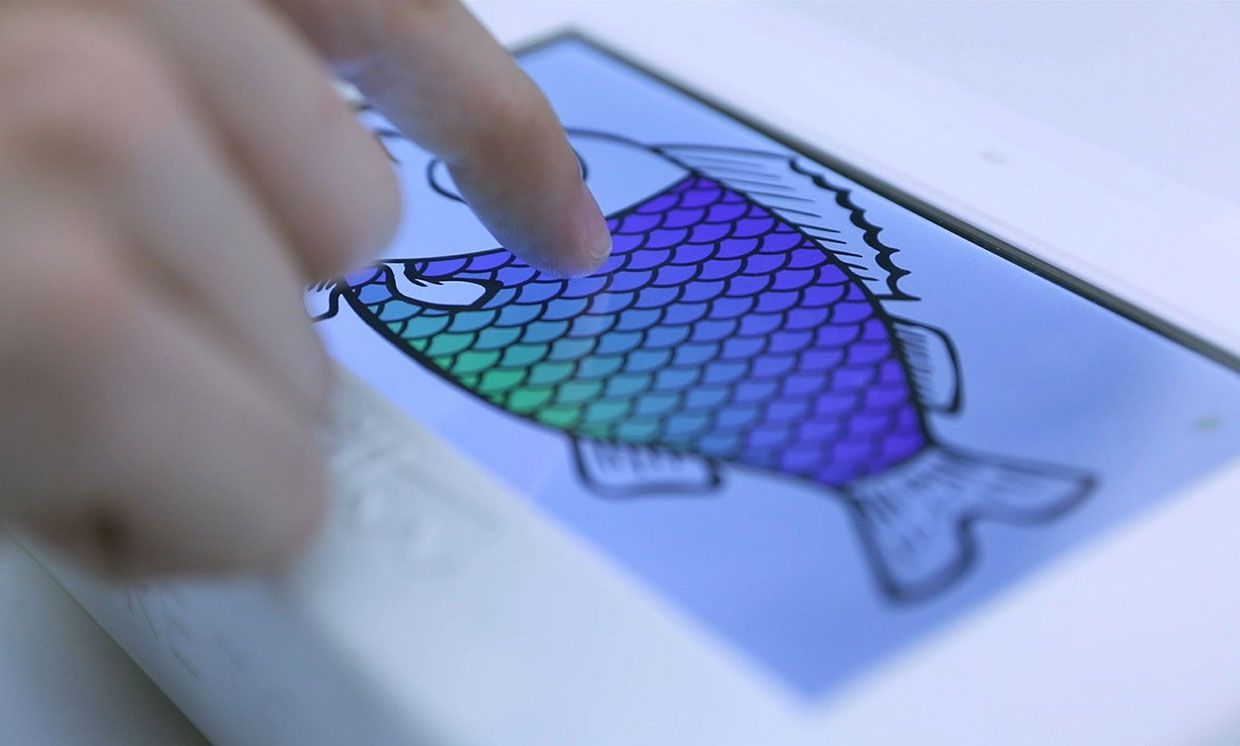CES 2020 Preview: A Haptic Phone Display, Scrunchable Battery, and Cooler That Makes Water From Air
CES 2020, which kicks off on Tuesday, will be full of Internet of Things (IoT) devices made smarter than ever by artificial intelligence, TVs and home appliances that beg you to converse with them, and wearables that tell you more about yourself than you likely want to know.
But the best part of CES is the moment you spot a tiny treasure-that little gadget that is absolutely useful, and perfectly designed. Some tiny treasures are tucked into an array of gear from major manufacturers, and some are the sole products of new companies betting their bank accounts on a CES launch. There's also joy-or at least entertainment value-in trying out a product that has automated something that really doesn't need to be automated.
The treasure hunt starts with the teaser announcements and invites that have been hitting my email box since late November. It will continue on the show floor, as I check these products out and stumble across (I hope) additional gems. Here, in no particular order, are the gadgets and technologies on my CES 2020 treasure map so far. Pricing, for the most part, has not yet been announced. I will update as prices become available:
Hap2U's Hap2Phone haptic display
 Photo: Hap2U
Photo: Hap2U French company Hap2U plans to demonstrate a full-screen piezoelectric layer for smartphone displays, which will allow people to feel individual letters on keypads as well as a variety of other sensations and textures. If it works, it could be a big help to people with low or no vision, and helpful to most of us. Of course, if it catches on, it could allow kids to text without taking their phones out of their pockets, to the frustration of teachers.
Jenax's J.Flex "scrunchable" batteries
Batteries often limit the form factor of gadgets designed for consumers. South Korea's Jenax is touting ultra-flexible-indeed, the company says, "scrunchable"-lithium-ion batteries that use non-flammable liquid electrolytes.
LynQ's "People Compass"
At the right price point, LynQ's gadget could be a winner. The handheld device lets you track people in a crowd from up to three miles away, showing their direction and distance. Sure, you could just text someone to ask where they are. But in a noisy, crowded place, texting can be frustrating: "I'm over by the entrance. Oh, no, not that entrance, I guess there's another entrance. Do you see the big tree, next to the other big tree"" During the product's development, the company offered various packages on Indiegogo that priced each unit at about US $100, which is probably a little high for something that will only get situational use. Pricing for the commercial release has yet to be announced.
Genny and Solar Genny from Watergen
Israeli startup Watergen says its stand-alone water coolers generate water from air. I've seen the technology before-Zero Mass Water in 2018 introduced rooftop solar-water generation systems at CES. But as far as I know, Watergen's is the first attempt to market a consumer appliance that uses the technology. The system can generate up to eight gallons of water a day-and it acts as a dehumidifier.
The AC Baseball Cap
Yes, I've seen those novelty hats with built-in fans, but they really don't do much. Hawaii-based Feher Research says its cooling cap truly chills, has no moving parts, and can run all day using thermoelectric technology.
The latest new pinball game from Stern, whatever it is
In my mind, pinball never went out of style. But it did seem to plateau for a while. At recent CES events, the new games from Stern Pinball have been impressive little playgrounds of mechanical and electrical engineering-so I'll be sure to check out this year's title, yet to be announced.
SmartyPans smart frying pan
OK, the name is very clever. But as Silicon Valley-based SmartyPans came up with a cute name for this sensor-laden, app-controlled, Fitbit-connected, AI-enabled, $229 frying pan, did the company ever ask itself why a frying pan should join the Internet of Things? That said, I do like the low-tech lift-out center for serving.
CookingPal's Julia countertop "chef"
This is another smart appliance I'm pretty sure won't be the next Instapot, but given the size of that market, you can't fault a company for trying. CookingPal's gadget suggests meals, fetches recipes, chops, stirs, and steams ingredients, and then cleans up after itself. No word whether or not Julia places her own grocery orders.
Heatbox
And one more in the cooking category-Heatbox. This portable gadget isn't nearly as smart as the home cooking gadgets, but has a more obvious market-people who pack a lunch and don't have a place to heat it. The company says the device takes about eight minutes to steam cook its contents on demand. My only concern-does it truly approach the size and weight of a lunchbox? Or is it so clunky that nobody would actually want to lug around? And why (at least in the photos I've seen) does it not have a carrying handle?
iKuddle
 Photo: iKuddle
Photo: iKuddle Another set of questionable additions to the Internet of Things: iKuddle's connected kitty litter box, water fountain, and automatic cat feeder. The devices can wirelessly communicate with one another-so as the litter box collects data on a cat's health, it can automatically suggest changes to a feline's food portions and hydration. (Given so many cats prefer to drink from anything besides their cat bowl, it's hard to imagine how this will work, but props to the company for IoT creativity.)
That's my CES short list, or most of it. A few new products that I'm quite excited about, including new motion-sickness-prevention wearables from Reliefband and some truly bizarre bathroom technologies, are still under embargo, so more on those in a future post.
You can also follow me through the CES halls on Twitter at @TeklaPerry.